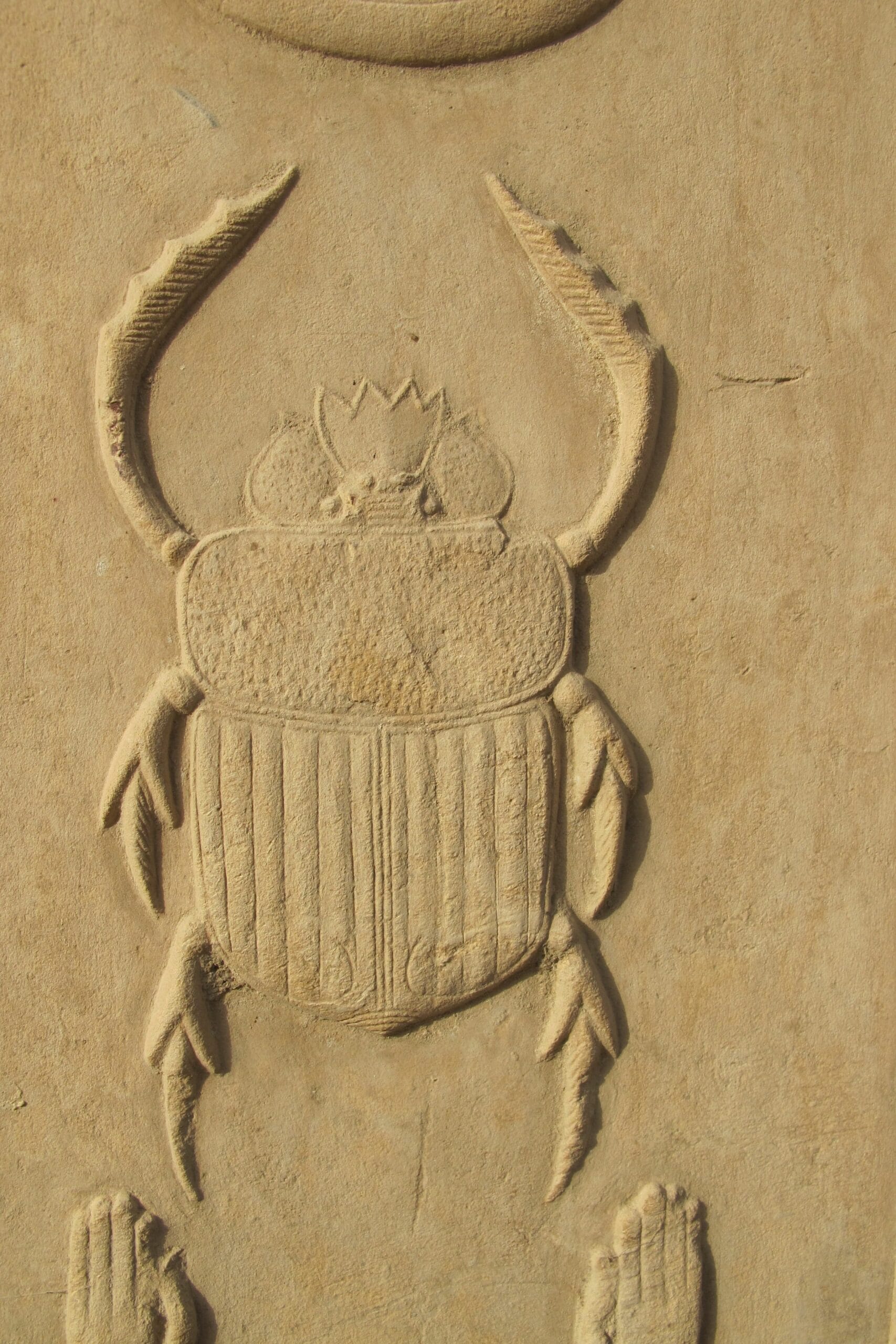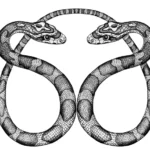The scarab beetle, a seemingly insignificant creature, held profound symbolic weight in ancient Egypt, representing life’s cyclical nature, the promise of rebirth, and the protective embrace of the divine. This article delves into the rich tapestry of meanings associated with this iconic beetle, exploring its significance in ancient Egyptian culture and its enduring resonance in modern interpretations.
The Scarab’s Celestial Connection: Symbolism in Ancient Egypt
The ancient Egyptians’ reverence for the scarab beetle stemmed from their astute observations of nature. The beetle’s habit of rolling dung into a ball, mirroring the sun’s perceived journey across the sky, linked it to the sun god Ra and, more specifically, Khepri, the god of the rising sun. This association imbued the scarab with profound symbolic meaning, connecting it to creation, rebirth, and the continuous cycle of life, death, and renewal. Just as the sun sets and rises again, so too does the scarab appear to vanish into the earth only to reemerge, pushing its symbolic sphere. This cyclical imagery resonated deeply with Egyptian beliefs about the afterlife, where death was seen not as an end but as a transition to another realm. Discover more about other powerful gemstones like serendibite.
This concept of rebirth was central to the scarab’s role as a funerary amulet. Placed over the heart of the deceased during mummification, scarab amulets, often crafted from precious materials like lapis lazuli or carnelian, were believed to facilitate resurrection and ensure a smooth transition into the afterlife. They acted as a spiritual passport, guiding the deceased through the perilous journey to the Field of Reeds, the Egyptian paradise. The presence of scarabs in Egyptian art and hieroglyphs further underscores their cultural significance, appearing on tomb walls, sarcophagi, and even royal seals, connecting pharaohs to divine power and legitimizing their rule.
The Scarab and Khepri: A Divine Partnership
The association between the scarab beetle and Khepri, the scarab-headed god of the rising sun and creation, solidified the beetle’s status as a sacred symbol. Khepri, whose name derives from the Egyptian verb “kheper,” meaning “to become” or “to transform,” embodied the transformative power of the rising sun, renewing the world each day. The scarab, mirroring this daily rebirth, became a potent symbol of hope, renewal, and the promise of life after death. While the exact nuances of this connection are still debated among scholars, some suggest it relates specifically to the self-creation of the gods, while others posit a broader interpretation, encompassing the transformative processes all beings undergo.
From Ancient Amulet to Modern Inspiration: The Scarab’s Enduring Legacy
The scarab beetle’s symbolic power has transcended its ancient Egyptian origins, continuing to resonate in modern interpretations. Today, the scarab is often associated with personal growth, spiritual awakening, and the resilience to overcome life’s challenges. It suggests, like the beetle transforming dung into something new, the ability to navigate obstacles and emerge stronger on the other side.
Interpretations and Folklore: A Multifaceted Symbol
The scarab’s symbolism also encompasses freedom and exploration, encouraging us to embrace new experiences and navigate life’s uncertainties with the same adaptability as the beetle navigating its environment. While some view it as a lucky charm, others associate it with caution or even a warning of impending challenges, a reminder that even in transformation, there can be obstacles. Even everyday routines like Sylvia’s commute to work via public transportation can be seen as a personal journey. Folklore surrounding the scarab varies across cultures, with some believing that encountering a scarab crossing one’s path brings good luck, while others consider a black beetle in the house an ill omen. Some traditions even warn against killing a scarab, believing it may bring negative consequences.
Untapped Mysteries and Ongoing Explorations: The Scarab’s Future
Despite centuries of study, the scarab beetle continues to intrigue, offering opportunities for further exploration. Cross-cultural comparisons could reveal how other societies interpreted this insect, shedding light on shared human experiences and unique perspectives on life and death. Psychological interpretations might offer insights into the scarab’s resonance with our hopes and fears regarding transformation and the unknown. Examining its continued presence in modern art, literature, and popular culture could illuminate how ancient symbols continue to captivate and inspire us. The scarab beetle’s journey, like the cyclical processes it represents, continues to unfold, promising further discoveries and a deeper understanding of this enigmatic creature’s enduring power.
- Unlock Elemental 2 Secrets: Actionable Insights Now - April 2, 2025
- Lot’s Wife’s Name: Unveiling the Mystery of Sodom’s Fall - April 2, 2025
- Photocell Sensors: A Complete Guide for Selection and Implementation - April 2, 2025
















